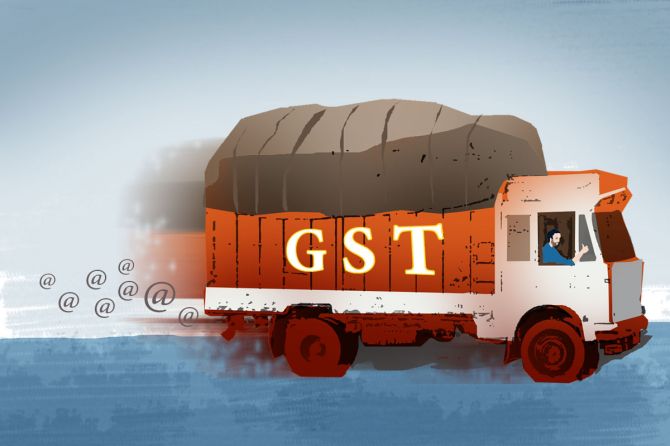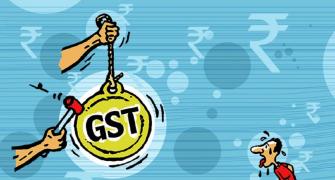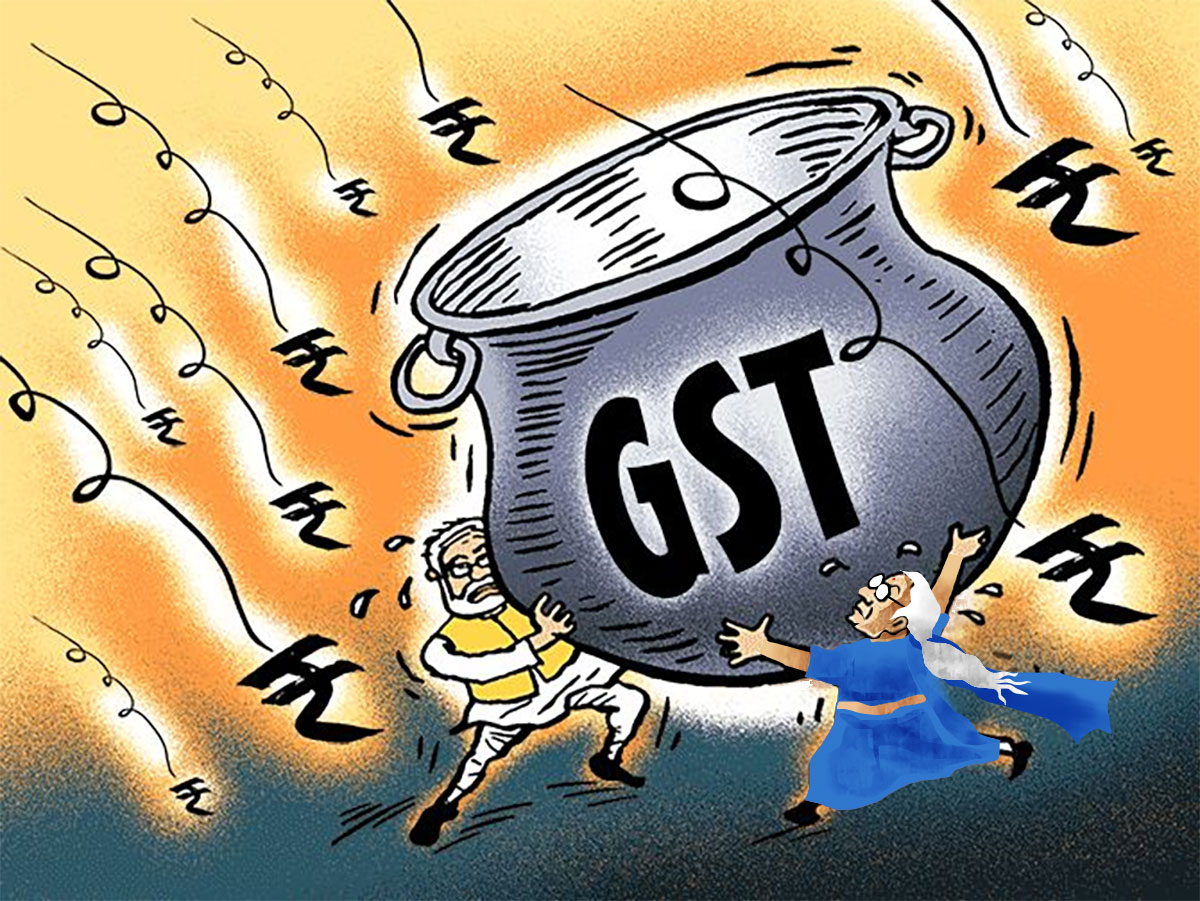No longer a discretion of the tax administrator, the audit of returns filed by taxpayers is now based on a selection by algorithms, notes Tarun Bajaj, former Union revenue and economic affairs secretary.

There have been several steps taken in the six years since the rollout of goods and services tax (GST) on July 1, 2017, that have helped make the new indirect tax regime a success.
Some of these are:
Rate reduction and rate rationalisation:
GST rates were either reduced or rationalised on several items.
The micro, small and medium enterprises (MSME) sector was especially kept in mind.
The 28 per cent slab was pruned substantially.
Threshold exemption and composition limits were increased significantly.
All this helped taxpayers realise the benefits of GST, and enabled the government to get their buy-in.
But this also led to a reduction from a revenue-neutral rate of 15.3 per cent to an actual average rate of 11.6 per cent, which resulted in reduced revenue collections and increased compensation requirement.
The formalisation of the economy and improved compliance in the past two years have, however, increased GST revenue and removed the need to increase rates to bring them on a par with the revenue-neutral rate.
Introduction of e-way bills:
The system of e-way bills for inter-state movement of goods was followed by the same for intra-state movement, in a staggered manner.
This led to a seamless movement of goods across the country on the one hand, and to detection of tax theft on the other.
Introduction of e-invoice:
A game-changer, the introduction of e-invoices enabled real-time authentication and validation of business-to-business (B2B) transactions and auto-population of details of B2B in GSTR-1 returns, making life easier for the taxpayer.
Dynamic solutions in the technology network:
The GST network has been very agile.
While it has brought efficiency in the system, helping taxpayers with automatic filing of returns and easier compliance through steps like SMS filing of nil returns, it has also provided tax administrators with actionable information.
It has built applications to detect fake dealers and entities evading taxes.
Sequential filing of returns:
This has brought discipline among taxpayers and improved revenue realisation.
The return filing percentage under GST, which has crossed 90 per cent (GSTR 1 and 3B), compares with the best-administered tax jurisdictions of the world.
Audit of returns:
No longer a discretion of the tax administrator, the audit of returns filed by taxpayers is now based on a selection by algorithms.
This ensures that the compliant are not harassed and the delinquents are caught at the same time.
The feeling now emerging is that it is best to comply and pay taxes.
And this is clearly visible in increased registrations, return filings and revenues.
Since last year, Deloitte has been producing a report on the functioning of GST on its anniversary.
It is pleasing to note that the report of a neutral agency has given such a good account of GST: 94 per cent of the respondents it cites have given positive affirmation to GST, by all standards a huge achievement.
Respondents have also acknowledged that the government's proactive measures to simplify compliance, specifically in the past year, have played a crucial role in fostering a positive GST experience.
The results of the Deloitte survey reflect a positive outlook for ease of doing business in India, with enhanced supply-chain efficiencies, working capital rationalisation, input cost reduction, etc.
Ninety-three per cent of the respondents have said that the GST regime could supplement the government's 'Make in India' (Aatmanirbhar Bharat) movement Indeed, there are also some issues flagged by the respondents where further reforms might be needed.
These need to be kept in mind, too. Overall, results point to very good and satisfying six years for GST, which the country can be proud of, even if some more reforms as detailed below are needed to bring further efficiency and effectiveness to the GST regime.
Evolution of the GST rate structure
The rate structure, including cess and multiple slabs:
The GST rate structure has undergone a significant change in the past six years.
The initial challenge of merging far too many pre-GST rates was achieved by putting commodities in mostly four rate slabs of 5 per cent, 12 per cent, 18 per cent and 28 per cent.
Special rates were prescribed for items like gold and diamonds.
Further, compensation cess also has many rates. There is a need to rationalise rate slabs.
Future efforts should be to reduce the three slabs of 5 per cent, 12 per cent and 18 per cent to just two.
This could be done by moving the 5 per cent slab upwards and gradually eliminating the 12 per cent one, with items in the latter slab being moved to the two remaining ones (most items could come to the lower slab).
This needs to be done to ensure revenue neutrality. A group of ministers is already working on this issue.
The 28 per cent slab needs further reform:
The rate slab of 28 per cent has been overhauled and now applies to only 37 items (compared with 229 earlier).
The items remaining in the highest slab are mostly luxury or sin goods like tobacco, aerated water, automobile, air-conditioners, and so on.
Major work has been done on this slab, but certain items like cement, televisions, motorcycles, and auto parts could also be considered for rationalisation.
Inverted-duty structure:
Another distortion in GST is commonly known as inverted-duty structure (IDS).
This essentially means higher GST incidence on inputs when compared to output. In IDS, manufacturers are stuck with input tax credit (ITC).
This requires seeking a refund from the government, which is often only partial, causing hardships.
The GST Council has made efforts to correct inversion on many items like mobile phones, footwear, renewable energy equipment, railway items, light-emitting diodes (LEDs), ink/dyes, pens, bags, and certain machinery.
Further IDS correction is required on items like textiles, fertilisers, tractors, utensils, medical equipment, agri machinery, aggarbattis, etc.
Exemptions:
GST has many exemptions. While some have been pruned, many of them still exist, particularly on services.
Exemptions do not benefit consumers in view of cascade tax, but they do seriously harm domestic producers.
It is imports that gain. Revenue suffers, too. These exemptions need to be pruned.
Phasing out of compensation cess:
Phasing out of the compensation cess is also an exercise that needs to be carried out.
This is a sensitive exercise and might require considerable prior work to merge the cess into GST rates.
Operationalising the GST tribunals:
This will provide necessary relief to the taxpayer. A lot of work has already been done in this regard; only the implementation needs to be expedited.
Expansion of tax base:
The GST base has expanded at an extremely fast pace, more than doubling to about 14 million from 6.5 million in 2017.
The concerted efforts made in this regard have led to robust buoyancy in GST revenue, with monthly revenues exceeding Rs 1.5 trillion, despite the global effects of the Covid-19 pandemic.
However, there is still a lot of scope to expand the tax base.
An effective strategy in this regard could include:
- Nudging potential taxpayers through sustained campaigning
- Involving local trade associations and advertising the benefits of joining the GST chain
- Systematic, non-intrusive, technology-driven surveys among potential taxpayers
- Incentivising new taxpayers to join the GST chain through speedier loan disbursements, financing, bill discounting, export facilitation, GST Day recognition, etc.
All these reforms need a lot of groundwork by committees, and then the GST Council.
The council should endeavour to bring these changes after the general elections next year.
After that, there should be stability in rates and the structure.
Further meetings of the council will then need to become boring and lacklustre to stop attracting media attention. That would, in my view, measure the final success of GST.
Feature Presentation: Aslam Hunani/Rediff.com










